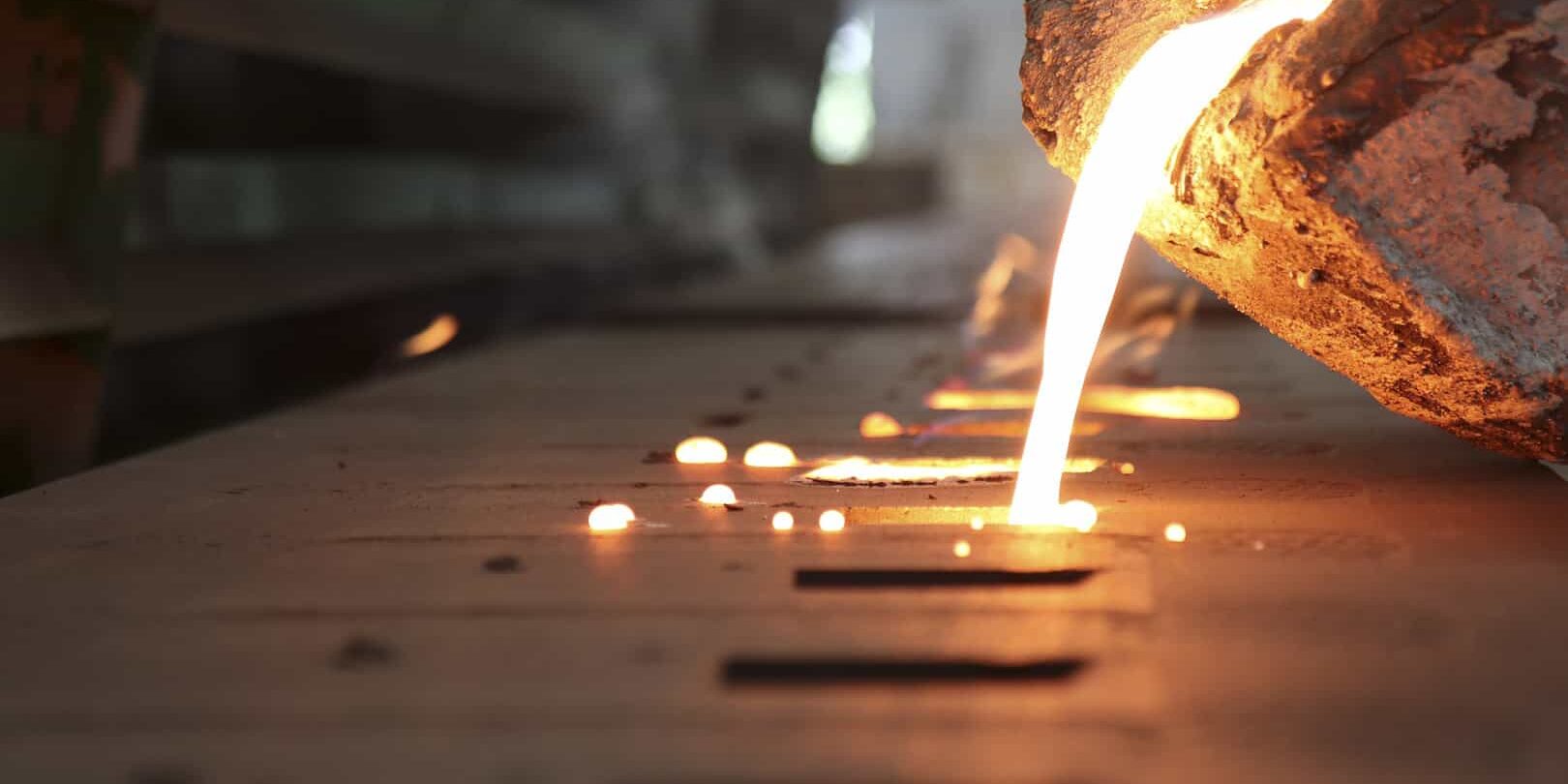Casting is the process of pouring molten metal into a mold to create an object. Metal casting has actually been around for thousands of years, with one of the first cast objects being dated back to 3200 BCE! With a few technological advancements, this process is still widely used today to create many of the objects we use in our everyday lives.
What is Casting Manufacturing?
Casting manufacturing specifically refers to the process of using casting processes to manufacture metal goods – often pieces and parts of equipment or machinery. Casting manufacturing usually takes place in a foundry that has all of the necessary equipment to create and fill molds in high volumes.
Depending on the product being produced, different metals can be used to fill the mold and create the object. Casting manufacturing allows for the mass production of complex and intricate objects with efficiency and consistency. Improvements to the casting process have further improved the precision and complexity of objects made from the casting process, so today, nearly every metal part or piece we use was made with casting manufacturing.
The Casting Manufacturing Process
Casting manufacturing begins first with creating the mold that will be used to cast the object. Metal is then melted down and poured into the mold. After the metal has cooled, the mold is removed and the object is cleaned to remove any remaining mold material, and then finished to remove any rough edges and apply any remaining treatments to the metal.
Types of Casting Manufacturing
There are several different types of casting, each using different mold materials and pouring processes. Each type of casting has its own advantages and disadvantages, and the right type depends on the product you’re making and the type of metal you’re using – so you should choose carefully when deciding which type of casting you will use.
Sand Casting
Sand casting is one of the most common and cost-effective types of casting. In this process, a pattern – or an object in the shape of the final form – is pressed into synthetic sand, leaving an imprint that will be filled with the molten metal. Once the metal cools and hardens, the sand mold is removed and the final product is cleaned.
Sand casting is cost-effective and can be used to create large objects. However, it’s not suitable for very complex or intricate products, and it’s difficult to ensure that very precise weight specifications are met every time. There is also a relatively longer finishing process required with products made from this process. The sand from the mold requires detailed cleaning to remove, and the mold leaves a rougher surface than some other casting methods, meaning that sand-casted products usually require sanding or polishing to create a smooth surface.
Investment Casting
Investment casting, also called lost-wax casting, uses wax pieces to create a mold. Wax, in the shape of the final product, is coated in several layers of material that create a sturdy shell. Once the shell has set, the wax and the shell are heated, and the wax melts out of the bottom of the shell, leaving the cast ready for molten metal. The metal is poured into the shell and then cooled before the shell is broken off, leaving the completed product. Investment casting is able to produce intricate and precise products with smooth surfaces, reducing the need for additional finishing after casting. However, this process is more expensive than other casting methods.
Die Casting
Die casting is one of the most precise and consistent methods of casting, but can also be the most expensive. In this process, a die is created out of metal that will create the shape of the product. The die typically has two halves so that one can be removed to remove the object once it hardens. There are several different methods of die casting, but they all involve injecting molten metal into the die at a consistent pressure. For high-pressure die casting, the metal is injected quickly, meaning that no part of the metal cools before the others, which makes it a beneficial process for products with thin portions. On the other hand, low-pressure die casting injects the metal slowly, allowing it to fill smaller areas as it cools. This process offers increased accuracy, especially for large objects, but can take a long time.
Foundry Experts at Tuffman Equipment
Contact our experts to find the right casting manufacturing equipment for you. Here at Tuffman, we pride ourselves on our knowledge and years of experience as one of the leading casting equipment manufacturers and are ready to assist you in finding the exact equipment and materials you need.







